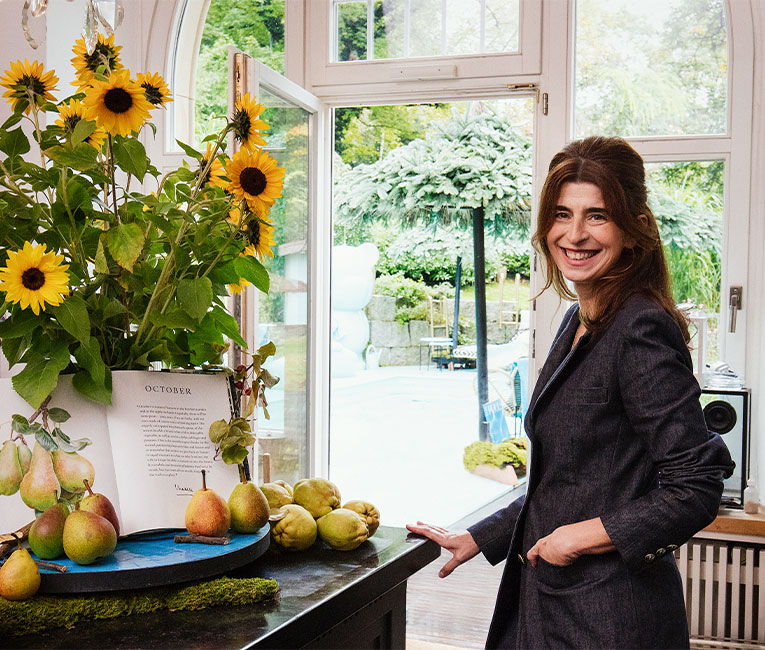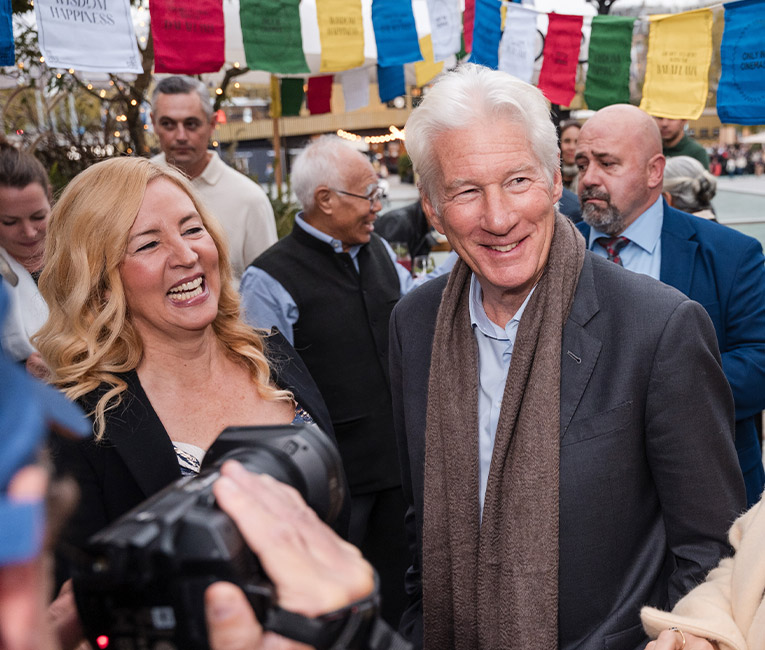GÜNTHER STELLY'S PERSPECTIVE ON BEAUTY, ART & THE UNREMARKABLE
AVIAIR: Mr. Stelly, before we dive into the details— here we are in your Berlin apartment, surrounded by breathtaking works of art. How does it feel to live surrounded by objects that have endured for centuries? And does this influence your perspective as a designer?
GÜNTHER STELLY: Art surrounds me every day; it’s part of my life—essentially, my living space. Honestly, all these wonderful things have gained a sense of normalcy over time. But of course, they inspire me – perhaps not consciously, but in a more intuitive way.
You’re well known for your high-quality fabric collections and the designs of Auerbach’s four annual collections. Surely, you have a unique approach or process when creating a design.
I’d say my work revolves around the details and how these details can tell a larger story. Fabrics, to me, are like canvases—they have texture, color, a certain tactile quality – and with that, the ability to convey stories. Through Auerbach, I aim to bring these stories to people in the form of something they can wear daily, whether it’s a scarf, a pocket square, or a bag. It’s about transforming the ordinary into something extraordinary.
So, your focus lies in materiality?
Yes, materials are always the starting point for me. Fabrics have an inherent character. They speak of craftsmanship, origin, traditions. A fabric can be rough or soft, textured or smooth, and all these qualities influence the mood it conveys. My task is to combine these properties into a design that works—both aesthetically and practically.
Beyond your fabric collections, you’re known for your passion for objects, especially vases. We’re currently looking at one of the largest collections of antique Chinese vases outside of China…
Vases are, to me, the perfect union of form and function. On one hand, they serve a practical purpose – they hold flowers, water, or sometimes just air. On the other hand, they are often works of art that stand on their own. I love how designers and craftsmen experiment with form, and how something as seemingly mundane as a vase can evoke such strong emotions.
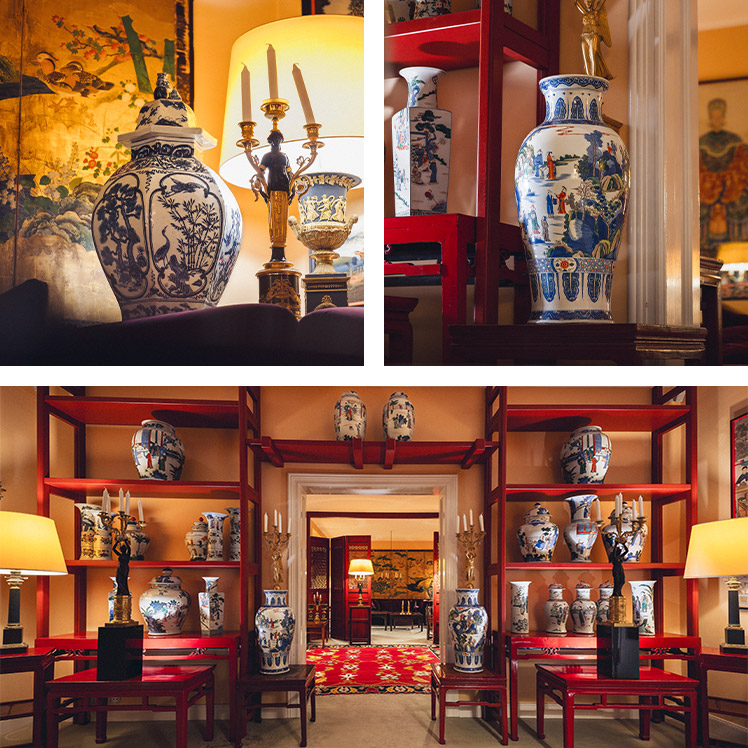
Can you share an example from your collection? Is there a piece that inspires you particularly?
There’s a vase in my collection from the 19th century, handcrafted from dark glass. Its shape is incredibly simple, almost bottle-like, but when you look closer, you notice tiny engravings resembling veins running through the glass. It’s an example of how understated design can hold depth and meaning. This vase reminds me that beauty often lies in the unremarkable – in the details that only reveal themselves upon closer inspection.
There seems to be a connection between your work with fabrics and your passion for vases.
Absolutely. Both worlds revolve around materiality and the relationship between form and function. A fabric needs to feel good, drape well, and be visually appealing. A vase is similar—it needs to enrich the space it occupies while fulfilling its purpose. In both cases, it’s about how an object interacts with its surroundings and the impact it creates.
Does this mean your work inspires your collections – or vice versa?
Both. Sometimes I discover a form or texture in a vase that I incorporate into a fabric collection. Other times, working with a particular material gives me a new perspective on a design object. It’s a constant dialogue.
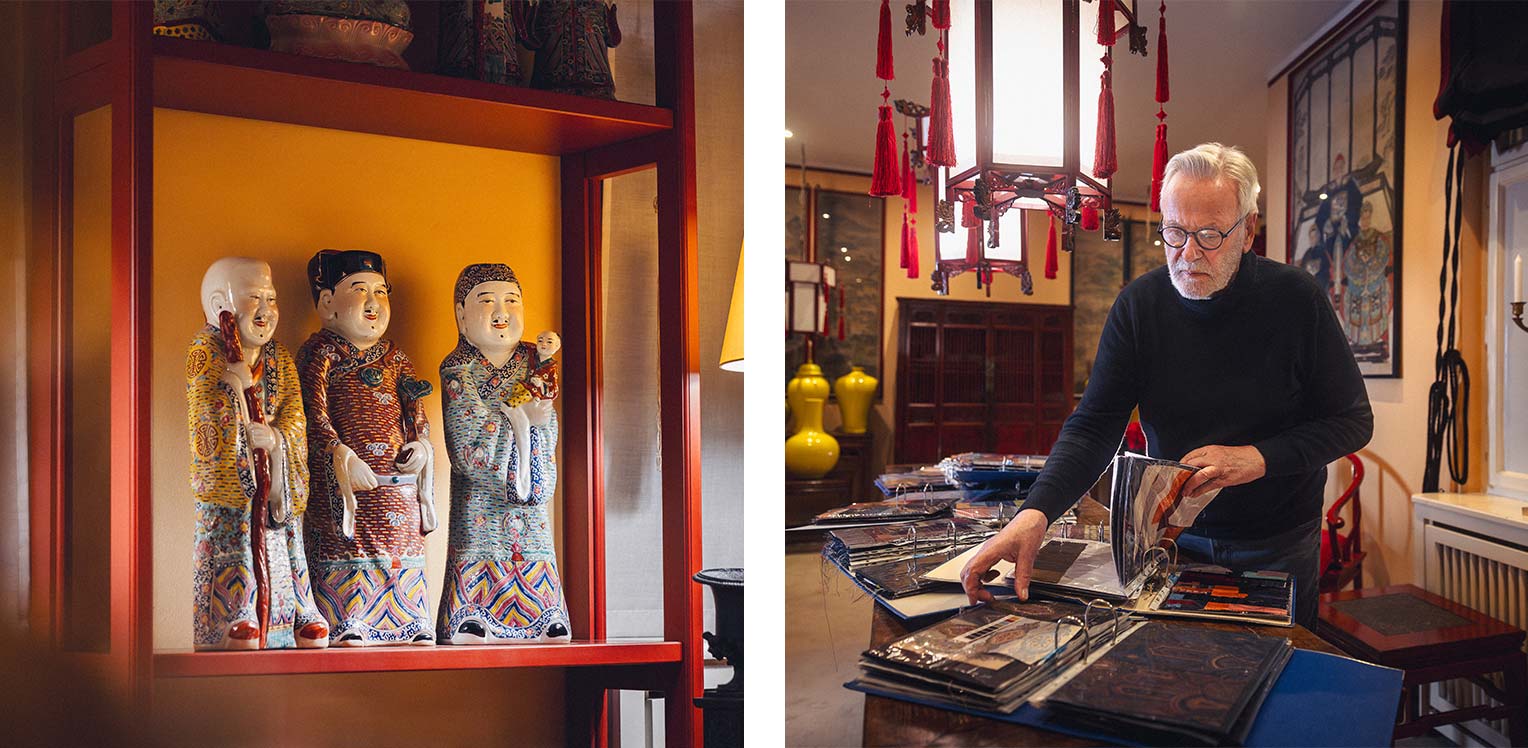
Let’s return to your fabric collections. Your designs are often described as elegant and timeless. What does elegance mean to you?
Elegance, for me, is restraint paired with sophistication. It doesn’t demand attention but works subtly. An elegant fabric surprises with its texture or a color that changes under different lighting. It’s about creating something that doesn’t reveal itself entirely at first glance but continues to show new facets over time.
And you combine this elegance with the practical demands of your accessories.
Yes, and that’s the challenge. A scarf or pocket square must not only look beautiful but also be comfortable to wear and durable. Elegance, to me, isn’t just about aesthetics; it’s about functionality. If a design is only beautiful but not practical, it loses its appeal for me.
Let’s return to the concept of beauty. You mentioned earlier that beauty often lies in the unremarkable. What exactly do you mean by that?
Beauty, for me, isn’t about the obvious or the perfect. It’s found in small imperfections, in unexpected details. I often see it in moments: how light falls on a texture or how a fabric moves in the wind. It’s something that surprises you because you weren’t actively seeking it.
Does this philosophy also translate into your designs?
Absolutely. This is a central aspect of my work. I always try to incorporate elements into my collections that aren’t immediately noticeable. A subtle sheen that only becomes visible in the light or a nearly hidden seam – such details, for me, represent the true beauty of a design.
Is there a connection between elegance and beauty?
Yes, but they are not the same. Elegance, for me, is a conscious choice – a way of designing or presenting something. Beauty, on the other hand, is more universal; it can exist in anything if you’re open to seeing it. While elegance is often deliberate, beauty is spontaneous, almost accidental.
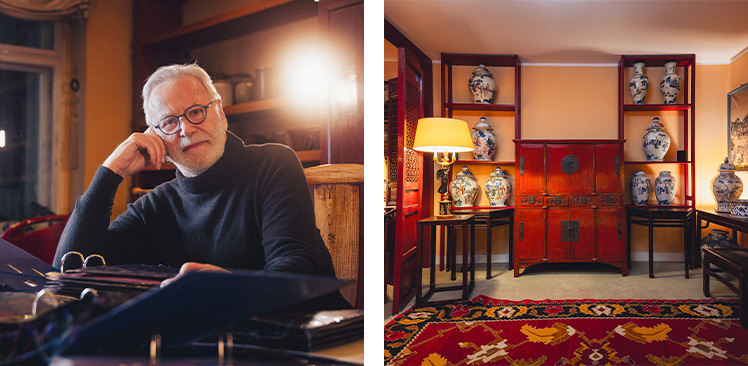
Would you say these ideas influence your work and perhaps even your collections?
I believe they are a thread running through everything I do. Whether I’m developing a new fabric, designing an accessory, or adding a vase to my collection, I’m always looking for the moment when something unexpected reveals itself. Beauty and elegance meet precisely where form and function come together. Beauty is one of life’s great mysteries and is hard to put into words. For me, it’s something you feel rather than describe. It’s found in the smallest things—a blooming iris by a pond or the delicate geometry of a spiderweb. These moments make you pause; they touch an invisible chord within. Beauty is never absolute; it’s always a harmony of time, place, and feeling. And sometimes, it only reveals itself with distance, when an ordinary sight becomes something meaningful in memory.
Your connection to art and design is also reflected in your passion for collecting. Would you consider collecting a form of creative activity?
Without question. Collecting is far more than simply accumulating objects. It’s a creative process, a search for what speaks to and inspires us. Often, it begins with an encounter, a detail that lingers in your mind – sometimes without you even realizing it. Then, years later, that memory resurfaces and flows into an idea. You could say that collecting is a form of creative preparation. It requires a keen eye, an instinct for connections, and often the courage to trust your own taste, even when others don’t share it.
Your home – or rather, your living space – is itself a work of art. Everything feels so thoughtful, so harmonious. Intentional, even.
Intentional? That sounds so constructed. In truth, everything evolved organically. When I first traveled to China, I bought a few pieces that fascinated me. Back then, it was purely intuitive. But then I began to study the subject more deeply, to read catalogs, cut out pictures. Each piece has its story, and together, they form something greater. My home is not a museum but a place to live. I use the objects around me—and yes, some things do break in the process. But that’s what makes it alive. I’m not interested in perfection. It’s about balance, about a flow of forms and colors that feels natural.
Despite this apparent effortlessness, your collection feels incredibly harmonious.
That may be because I have a sense of harmony that guides me. It’s not that I consciously follow rules, but I can feel when something doesn’t fit. Perhaps it’s an aesthet i c intuition I’ve developed over the years. Ultimately, what matters is that a space feels right to me. I don’t think about specific arrangements – it’s more of an intuitive sense of balance. And that, I believe, can’t be forced. It has to come from within.
That’s evident. Your approach to work seems similar. Do you have any rituals when working creatively?
Perhaps not in the classical sense, but I do have my quirks. On my desk, I only keep what I currently need. Everything else disappears. Sometimes it just ends up on the floor—I need space to think clearly. Creativity requires freedom, and you create that by letting go of unnecessary things. At the same time, I’m a collector of impressions. I cut out patterns, images, forms, and archive them. My archive contains tens of thousands of motifs I’ve collected over decades. It’s a reservoir I can draw from whenever I need inspiration. You could say the archive is an essential part of my rituals – it keeps my ideas alive.
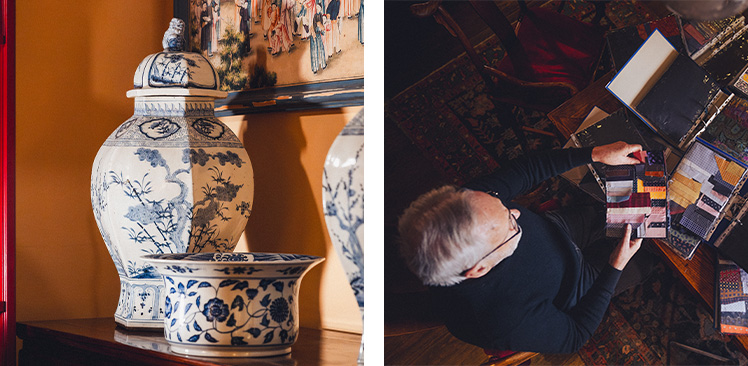
That archive sounds like a treasure. Yes, a treasure I use frequently. It’s incredible how much in art and design repeats itself. You could almost say that nothing is truly new. But that’s not a weakness – it’s a strength. The archive allows me to pick up old ideas and place them in a new context. It’s a dialogue with the past that helps me create in the present. When I work for Auerbach, I often draw on it. It gives me both confidence and the freedom to focus on what’s essential.
Since 2015, Jan-Henrik Scheper-Stuke has brought another personality and perspective to Auerbach’s leadership. How do you experience this collaboration between generations?
It’s a relief, honestly. The fashion world used to be ruthless – four collections a year, thousands of designs, endless travel, and representatives covering every corner of Europe. That was the reality. Today, things are calmer. I work directly with Jan, and we discuss what’s needed. It’s a kind of creative dialogue. Jan provides guidelines – scarves in a particular format, for example – and I bring them to life, drawing inspiration from my archive or creating something new. It’s a concentrated, focused way of working that suits me well.
Are there moments in your career that you’re particularly proud of?
Pride is a tricky word. Perhaps I’m more grateful than proud. Grateful for the people I’ve met, for the experiences that have shaped me. Pride feels so final, as if you’ve reached a peak. But for me, it’s the journey that matters. Every encounter, every challenge has taken me further. When I look back, I see fewer individual highlights and more a web of impressions and experiences that have made me who I am today.
So your focus seems more on the process than the outcome.
Exactly. The process is the heart of it all. It challenges us, teaches us, makes us better. The result is often just a moment, but the journey to get there is what stays with you. Creations come from encounters, from engaging with others. That’s what has expanded my horizons and shaped me. And for that, I’m deeply grateful.









